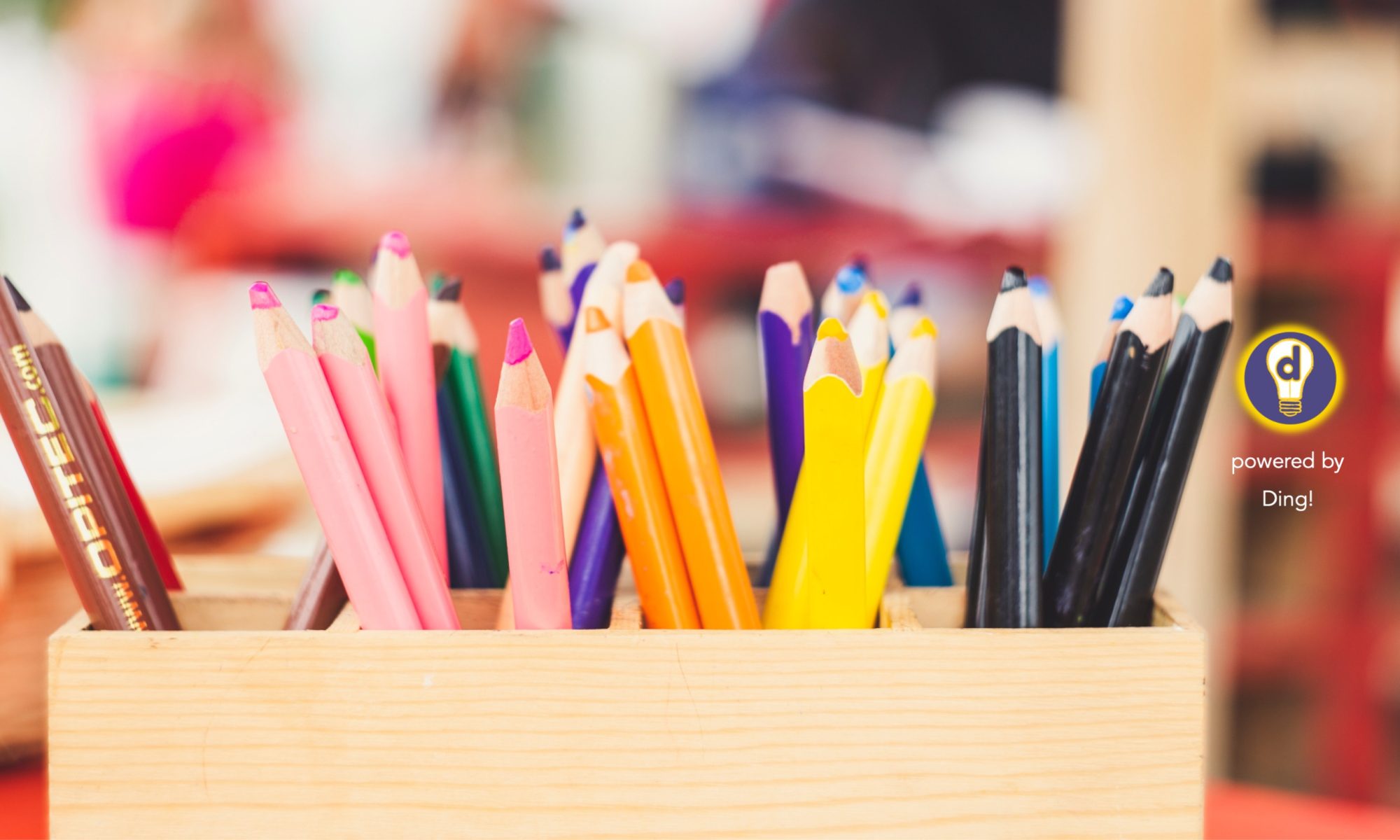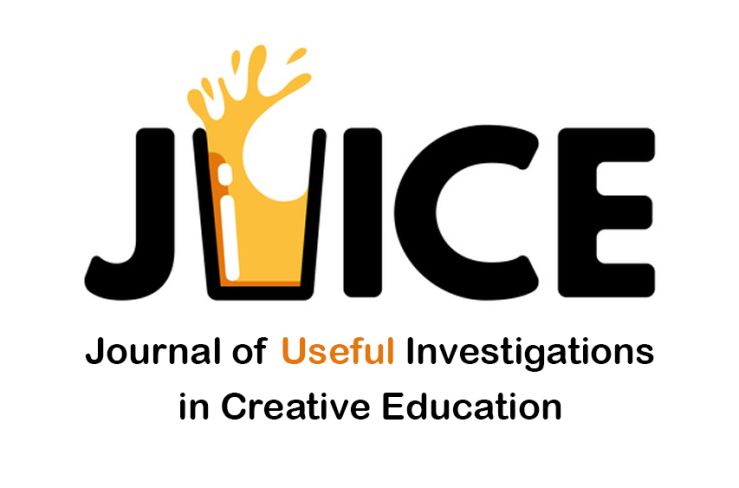What is JUICE?
JUICE is the Journal of Useful Investigations in Creative Education. It is a peer-reviewed, open-access journal that provides a route to publishing for people who have something to say about creative education. It contains a multi-media collection of material that relates to, engages with, comments on and challenges educational practice. It gives a voice to those who are interested in creative approaches to teaching and supporting learning.
JUICE is owned and managed by the Ding Learning – a creative learning design agency who are dedicated to creating exceptional learning experiences.
What is ‘creative education’?
This is an obvious question – surely all education is creative in some way?
In 1999, the UK Government published All Our Futures: Creativity, Culture and Education, a report chaired by Professor Ken Robinson, who subsequently went on to give numerous public speeches and TED Talks making the case for creativity in the compulsory education curriculum. In this report, creative education is defined as ‘forms of education that develop young people’s capacities for original ideas and action’.
Taking inspiration from Sir Ken Robinson and all those who have been galvanised by his work, JUICE provides a platform for those working in creative contexts in higher education to share their experiences of making ‘useful investigations’ into their teaching practice. Specifically, JUICE actively promotes the experiences of those who strive to innovate in their approaches to teaching and supporting learning in higher education in order to develop students’ capacities for original ideas and action.
As Guy Claxton (2006) has commented, the word ‘creativity’ can be unhelpful as it can lead to a sense of mystery and wonder and a search for individuals who have ‘got it’. Claxton argues that such a view ‘ignores the extent to which creativity might be composed of a collection of habits of mind that everyone could be capable of developing’. From this perspective, JUICE aims to promote useful, practical ideas to inspire reflexive and creative approaches to teaching that encourage educators to try new things, take calculated risks, and enter into a reflective dialogue between learning, making, educating and being educated.
Where has JUICE come from?
Organisationally, JUICE has evolved through collaboration between the University for the Creative Arts and the Open College of the Arts, two institutions that are dedicated to creative education. Although both can be seen as in the creative arts sector, the aim of JUICE to focus on ‘creative education’ instead of ‘creative arts education’ constitutes a conscious effort to show how the creative pedagogies of arts-based subjects have much to offer disciplines beyond the arts. A key aim of JUICE is to draw attention to innovation in courses from ‘creative’ disciplines that can be used to inspire positive changes in other disciplinary areas.
Politically, JUICE is motivated by a commitment to push back against the increasing marginalisation of ‘creative’ subjects in the compulsory curriculum. All those involved in the production of JUICE have the privilege of working with teachers and students in creative contexts in higher education, and every day we witness the humanising benefits of creativity manifested through teachers and students developing original ideas through their creative work. The positive effects of creativity on confidence, wellbeing and the ability to feel a sense of belonging is supported by research, a factor which makes the removal of creative subjects from compulsory education even more distressing. By focusing on creative education in a university context, we aim to emphasise its potential to help young adults move beyond their often traumatic experiences of compulsory schooling by developing their personal and professional identity through creative practice.
Philosophically, JUICE is firmly rooted in the work of Paolo Freire and Carl Rogers. While it is hard to dispute that teaching is a creative act because it is a ‘vibrant, dynamic and unpredictable process that draws on all your faculties’ (Ashton and Stone, 2018: xv), this does not mean that all education is necessarily creative. Freire argued that education is not ideologically neutral, and can either work to promote conformity to the present system or equip people to ‘deal critically and creatively with reality and discover how to participate in the transformation of their world’ (2005: 34). We at JUICE believe that Freire’s argument for ‘education as freedom’ lies at the heart of creative education through its focus on enabling students to develop original ideas through their learning that have the potential to transform their personal and professional world. Such a view of learning opens the door to the truly student-centred approach to teaching promoted by Carl Rogers, who argued that ‘the purpose of adult learning is to help [students] learn, not to teach them all you know and thus stop them from carrying on learning’. To educate creatively is to liberate thinking, challenge conventions, embrace vulnerability and explore what it means to be fully human.
Practically, the development of JUICE has been inspired by the groundbreaking open access journal Hybrid Pedagogy, a journal that explores the intersection of Freire’s philosophy of education with digital technologies. A belief in the power of critical pedagogy to place learners at the centre of teaching underpins both our interpretation of creative education, and our commitment to sharing research that focuses on helping learners develop their capacity for original thoughts and action.
Why do we need JUICE?
We believe that there is a need to actively promote the benefits of experimentation and risk taking in higher education teaching. Stephen Felmingham (2016) observes that in a sector increasingly preoccupied with outcomes, professionalism and employability, the space to experiment and take risks could be seen as problematic. But uncertainty, arrived at and experienced through risk-taking, then mobilised to make a space for potential, is inherent to ideas development, and to creativity. David Anderson’s article Problem solver to problem causer – a narrative provides a valuable example of giving students the space to fail, iterate and refine, and highlights some of the problems that an outcomes-based curriculum presents for the development of original ideas. Doug Burton’s exploration of ‘slow learning’ provides another example of giving students enough time to take risks and experiment in order to develop their creative practice.
There is also a need to promote more creative approaches to education in order to respond to the increasingly diverse learning needs of students in higher education. In a reflection on equality and diversity, Christine Talbot proposes that ‘an inclusive curriculum is essentially an imaginative curriculum’ (2004: 23), and that making curricula accessible can be achieved through creative approaches to teaching. In her article Inclusivity and diversity support for technicians at a creative arts university, Tara Murphy demonstrates the value of ensuring that support for diversity and inclusive practice is extended to staff in ‘non-teaching’ roles, but who have a significant impact on the student experience. If we are serious about putting ‘students at the heart of the system’ (BIS, 2011), then such inititatives need to be shared more widely within the sector. The aim of JUICE to capture and share examples of creative education that promote inclusive learning will hopefully make the journal a useful resource for educators.
The notion of a position arrived at through enquiry that has embraced the unknown becomes the open space from which to generate ideas and learn something new. JUICE provides a platform to capture and share these precious moments of inspiration, realisation and innovation that happen every day in our creative practice and our educational work. All too often, these moments are lost through over-work and lack of time. By offering educators the opportunity to develop multi-media examples of creative education, we hope that JUICE will support those who wish to express their creativity in order to share their stories and inspire original thoughts and action.
References
BIS (2011) Students at the Heart of the System. Department for Business Innovation and Skills.
Claxton, G. (2006) Creative Glide Space. In: C. Bannerman (Ed.) Navigating the Unknown: The Creative Process in Contemporary Performing Arts. Middlesex University Press.
Ashton, S. and Stone, R. (2018) A-Z of Creative Teaching in Higher Education. London: SAGE.
Felmingham, S. (2016) Arguing out a Space: re-visioning criticality and student conference in a professionalized sector. Paper presented at the National Association for Fine Art Education, London Metropolitan University, 22nd January 2016.
Freire, P. (2005) Pedagogy of the Oppressed: 30th Anniversary Edition. New York: Continuum.

